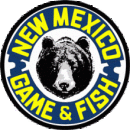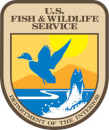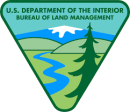Location













States
New MexicoEcosystem
River/streamIntroduction
The Mimbres River flows for 40 miles through southwestern New Mexico, passing a diverse array of landscapes and invaluable riparian riparian
Definition of riparian habitat or riparian areas.
Learn more about riparian habitats. The Mimbres Basin is the only place in the United States where the Chihuahua Chub (Gila nigrescens) occurs, and is also home to the Chiricahua leopard frog (Lithobates chiricahuensis). Both are classified as federally threatened species. They suffer from habitat degradation due to water withdrawals and river channelization, competition and predation by non-native species, and fungal diseases.
Moreno Spring, just upstream of Stitzel Canyon, is a wetland bog with some pockets of open water and was likely a former river channel of the Mimbres. The Nature Conservancy owns a 208-acre piece of land that covers much of this spring, and saw potential in using the land to increase suitable habitats for Chihuahua Chub and Chiricahua leopard frog. In 2012, the Nature Conservancy began collaborating with the U.S. Fish & Wildlife Service (USFWS), the New Mexico Department of Game and Fish (NMDGF), and other partners to enhance populations of the chub and leopard frogs in Moreno Spring. The project aimed to restore beneficial wetlands in this region by creating more open-water habitats and removing vegetation that reduces habitat suitability for chub and frogs. Project partners completed restoration in 2015, and monitoring of both chub and frog continues.
Key Issues Addressed
The biggest threat Chihuahua Chub and Chiricahua leopard frogs face is habitat loss resulting from droughts, floods, water diversions, wildfires, mining, and other human activities. Chihuahua Chub prefer open-water pools and slow-moving water, and Chiricahua leopard frogs also use pools and water edges to lay eggs and hide from predators. However, the upper portions of Moreno Spring became overgrown with vegetation, particularly alligator juniper (Juniperus deppeana), that reduces the amount of water from precipitation that enters the soil and diminishes the span of riparian areas by competing for water. This has also contributed to a decline in suitable habitats, posing a threat to these two species.
Habitat restoration can be difficult in the Mimbres Valley, as most of the land is privately owned with little public access. The Nature Conservancy owns over 600 acres of land along the Mimbres River, including the 208-acre section of Moreno Spring. Working with organizations like The Nature Conservancy that purchase land for conservation efforts can provide access to crucial habitat ranges that fall outside of publicly accessible lands.
Finally, partners need resources and funding to conduct species population surveys and land maintenance after the conclusion of a project. Post-project restoration activities and long-term site monitoring are needed to ensure that target species populations are increasing and taking hold. Monitoring also involves awareness of harmful invasive species invasive species
An invasive species is any plant or animal that has spread or been introduced into a new area where they are, or could, cause harm to the environment, economy, or human, animal, or plant health. Their unwelcome presence can destroy ecosystems and cost millions of dollars.
Learn more about invasive species that may impact the health of the chub and leopard frog over time.
Project Goals
- Build habitats that benefit Chihuahua Chub and Chiricahua leopard frog by digging open-water pools and channels and removing vegetation
Conduct long-term monitoring of both species’ populations
Educate interested parties about the need for, and methods of, habitat restoration for these species
Project Highlights
Keeping Critters Safe: Before using heavy machinery, biologists combed Moreno Springs day and night to find, and temporarily relocate, frogs and fish. They were then safely returned after restoration was concluded.
Beneficial Habitats: By 2015, project partners dug 14 open-water pools of varying sizes (24 - 50 ft wide) and depths (3-5 ft deep) using a trackhoe over Moreno Springs. The pools had inlets and uneven edges, which provided added underwater surface area and complexity, creating useful habitats for the chub and leopard frog populations. Some pools were isolated, while others were connected to water channels to allow the fish and frogs to easily move between different areas. Finally, project partners planted grass around the ponds to cover any bare soil the trackhoe left.
Removing Vegetation: Over the course of the project, biologists uprooted and removed all juniper trees with a trackhoe in the open fields of Moreno Spring where they built the ponds. Completely uprooting the trees prevents the likelihood of new trees sprouting.
Increasing Frog and Fish Numbers: By August 2016, researchers conducted a survey and saw numerous Chiricahua leopard frog egg masses and over 100 adult frogs in the newly-established pools, suggesting that the habitat reconstruction project was successful. Although it is unclear whether these pools directly benefited the Chihuahua Chub, their population has increased in the Mimbres since 2020.
Restoration Workshop: The Nature Conservancy and partners led a restoration workshop with 16 participants including local conservation practitioners and curious landowners. Participants learned low cost techniques to restore wetland habitats for rare species. They also learned skills including selecting locations for building wetlands, testing for groundwater quality and soil texture, and operating equipment. The workshop raised awareness for Chihuahua Chub and Chiricahua leopard frog and inspired action for future restoration and habitat work.
Lessons Learned
Open communication among the USFWS, NMDGF, The Nature Conservancy, and other partners allowed the project to come to fruition. These organizations pooled resources including land, permit familiarity, and funding. The project was primarily intended to benefit Chihuahua Chub; however, partners soon realized the potential to expand restoration to benefit the Chiricahua leopard frog. This also indicates the benefit of collaboration among parties with different expertise.
One unexpected consequence of the habitat restoration project was the discovery of northern crayfish (Faxonius virilis), an invasive species in the river system, in the constructed pools. Surveyors saw the crayfish, historically at low levels at the restoration site, starting in 2018 but the numbers have increased since the project was completed. It is likely that the restoration project increased connectivity to warmer pools that crayfish prefer, causing them to expand into Moreno Spring. Crayfish pose a new set of challenges to the Chiricahua leopard frog because they prey upon frog eggs and larvae. Several of the pools created during this project have since dried up, and partners are unsure how to remedy these issues. These unforeseen consequences emphasize the importance of adequate funding, long-term monitoring, consultation, and management for years after project completion.
Collaboration and consultation with specialists was also a key step in successful restoration work. Project partners enlisted help from a regional biology expert, who led the pool design and construction, allowing them to maximize the effectiveness of the new habitats. Looking back, project leaders noted that the work may have also benefited from specialists on non-native and invasive species in the area, potentially preventing the crayfish boom the area currently struggles with.
Next Steps
- Host a site visit to assess the viability of moving the threatened Chiricahua leopard frog to additional secure locations such as stock tanks to ensure their safety from crayfish predation.
Collaborate with additional partners for crayfish removal. Project partners have been consulting with other experts, and are considering several possible crayfish removal techniques including minnow traps, hand captures, dip netting, and electrofishing. Each method differs in the number and size of crayfish caught, and varies in their impact on native fish, so adequate research and understanding is needed before these tools are implemented.
Continue monitoring population densities of Chihuahua Chub in the Mimbres River Basin. NMDGF will continue their monitoring and population estimates of the chub for the next two to three years during the spring season.
Funding Partners
Resources
Contacts
Martha Cooper, Southwest New Mexico Program Manager and Freshwater Program Manager, The Nature Conservancy: mschumann@tnc.org
Leland Pierce, Herpetologist, Division of Amphibians and Reptiles, New Mexico Department of Game and Fish: leland.pierce@state.nm.us
Matthew Zeigler, Colorado River Basin Native Fish Supervisor, New Mexico Department of Game and Fish: matthew.zeigler@state.nm.us
CART Lead Author
Angela Schmitt, CART Student Intern, University of Pennsylvania
Suggested Citation
Schmitt, A., Cooper, M., Pierce, L., and Zeigler, M. (2022). “Mimbres River Habitat Restoration for the Chihuahua Chub and Chiricahua Leopard Frog.” CART. Retrieved from https://www.fws.gov/project/mimbres-river-habitat-restoration.










